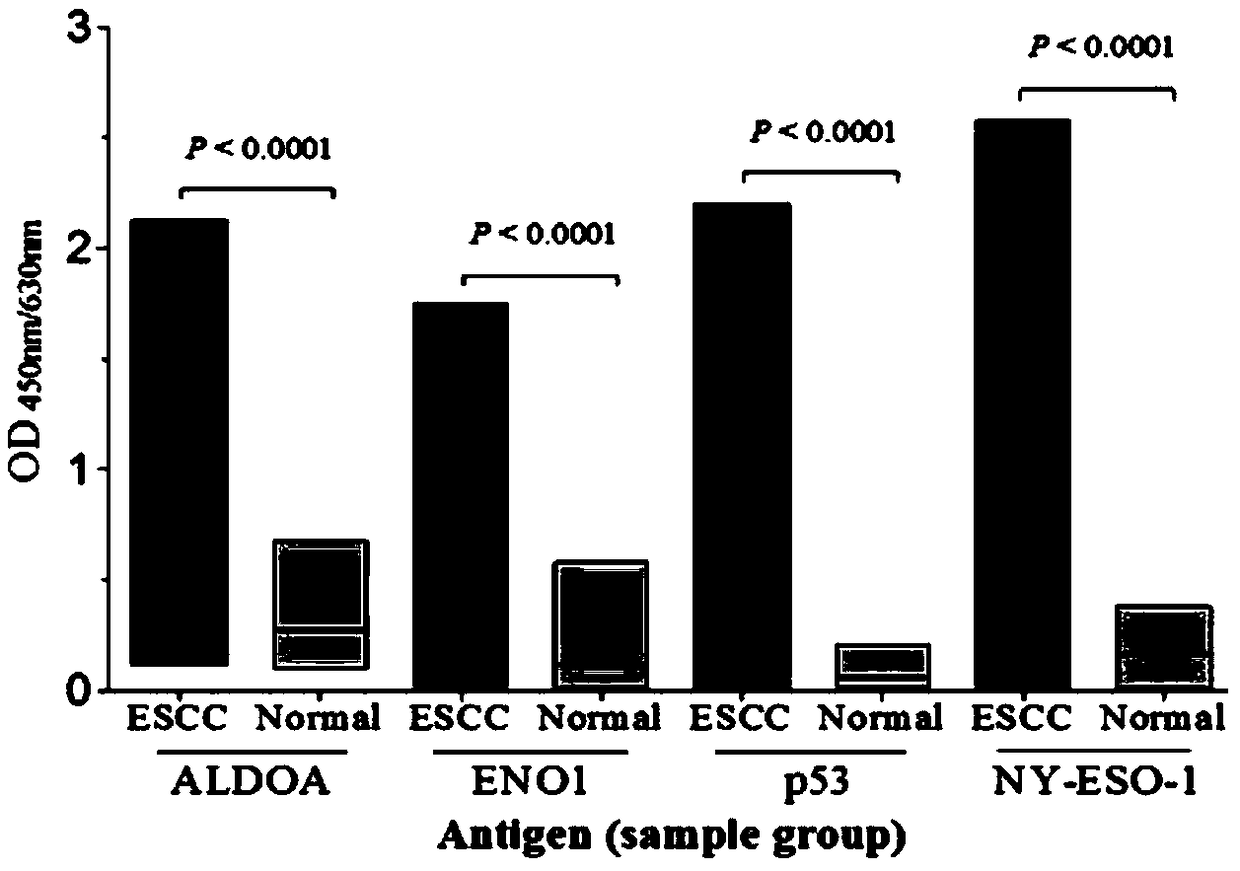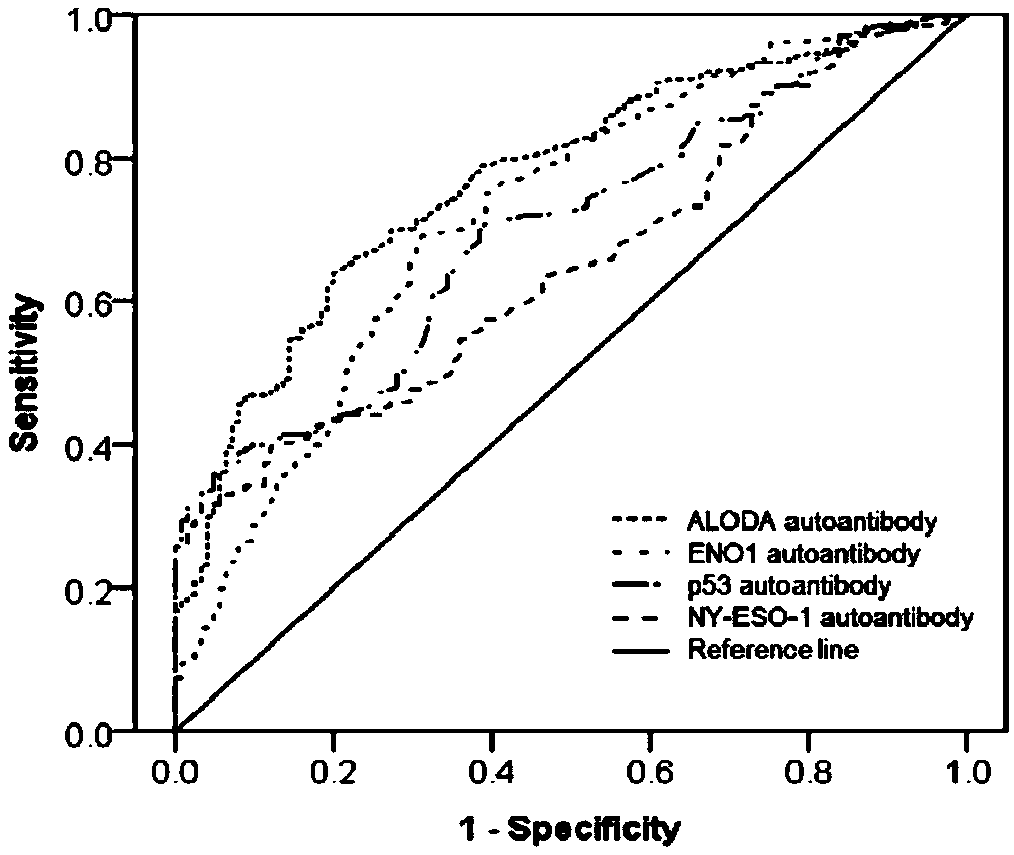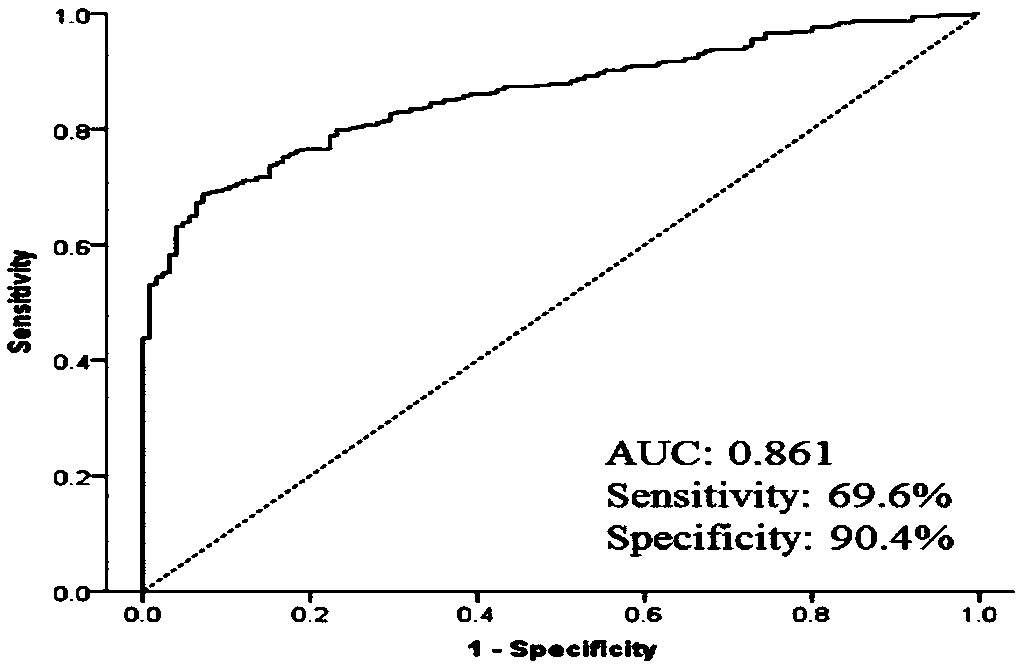Esophageal squamous cell carcinoma autoantibody molecular marker model and application thereof
A technology of molecular markers and autoantibodies, which is applied in the fields of analysis materials, biomaterial analysis, and measurement devices, can solve the problems of esophageal squamous cell carcinoma patient evaluation and survival rate of less than 15%, achieve good discrimination effect, simple detection method, Good sensitivity and specificity effect
- Summary
- Abstract
- Description
- Claims
- Application Information
AI Technical Summary
Problems solved by technology
Method used
Image
Examples
Embodiment Construction
[0025] In order to make the purpose, technical solution and advantages of the present invention clearer, in this example, serum samples from 125 healthy persons and 388 esophageal squamous cell carcinoma patients before treatment were collected from 2011 to 2014. The present invention will be described in further detail below in conjunction with the accompanying drawings.
[0026] The steps of the ELISA indirect method are as follows:
[0027] (1) Coating: Dilute recombinant ALDOA protein, recombinant ENO1 protein, recombinant p53 protein and recombinant NY-ESO-1 protein with 0.05M pH9.6 carbonate coating buffer to 0.4 μg / ml and 0.2 μg / ml, respectively. ml, 0.1 μg / ml and 0.1 μg / ml. Add 0.1ml of diluted recombinant ALDOA protein, recombinant ENO1 protein, recombinant p53 protein and recombinant NY-ESO-1 protein to the reaction wells of the 96-well ELISA plate, overnight at 4°C. The next day, the solution in the well was discarded, and washed 3 times with PBST, 1 minute each t...
PUM
 Login to View More
Login to View More Abstract
Description
Claims
Application Information
 Login to View More
Login to View More - R&D
- Intellectual Property
- Life Sciences
- Materials
- Tech Scout
- Unparalleled Data Quality
- Higher Quality Content
- 60% Fewer Hallucinations
Browse by: Latest US Patents, China's latest patents, Technical Efficacy Thesaurus, Application Domain, Technology Topic, Popular Technical Reports.
© 2025 PatSnap. All rights reserved.Legal|Privacy policy|Modern Slavery Act Transparency Statement|Sitemap|About US| Contact US: help@patsnap.com



